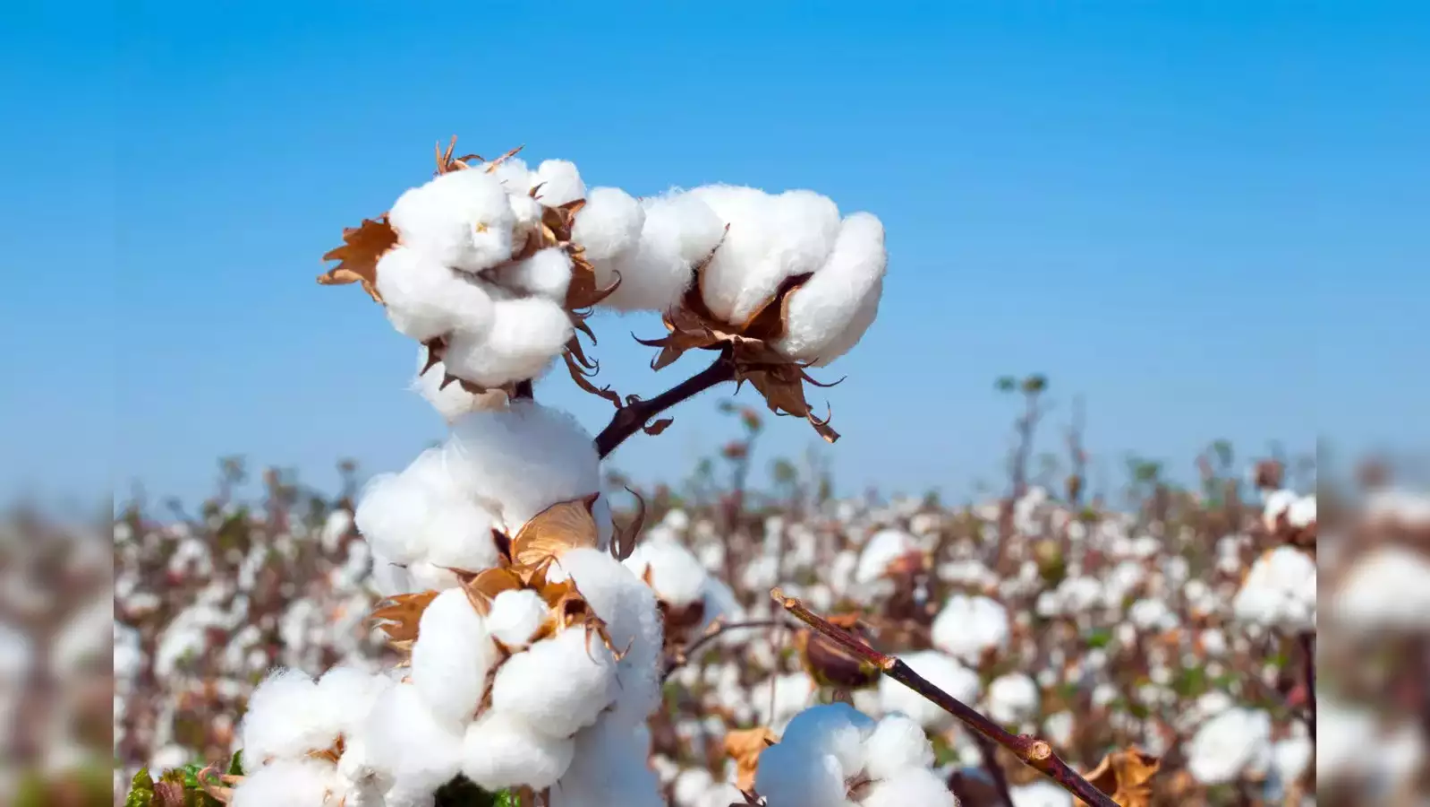Description

Copyright infringement not intended
Picture Courtesy: economictimes.indiatimes.com
Context: The Union Minister for Textiles, Commerce, and Industry, expressed India's goal to become the world's largest cotton producer.
Details
- The Indian textile industry aims to achieve a significant milestone of $250 billion by 2030, with $100 billion specifically from exports. This indicates a strong push to expand both domestic and international market shares.
- The introduction of state-of-the-art testing laboratories by the Textile Ministry and the Department of Consumer Affairs indicates a commitment to ensuring high-quality textile products manufactured and exported from India.
- Innovation in agriculture techniques, such as drone-based pesticide spraying, aims to benefit Indian cotton farmers. The integration of innovation and the Internet of Things (IoT) is highlighted as a means to support and enhance agricultural practices in cotton farming.
|
Cotton
●Cotton is a sun-loving plant, requiring a minimum daily temperature of 16°C for germination and ideally between 21°C and 27°C for optimal growth.
●Cotton is sensitive to frost, so at least 180 frost-free days are crucial for a successful harvest. 200 or more days are even better, ensuring ample time for the bolls to mature.
●Around 55-100 cm (22-39 inches) of rainfall, evenly distributed throughout the growing season, is ideal.
●Excessive rainfall can lead to waterlogging, fungal diseases, and reduced boll formation.
●Cotton thrives in a well-drained, fertile loamy soil. Black soil with good aeration, like the Deccan trap region in India, is a prime example.
●Cotton needs ample sunlight for photosynthesis and healthy growth. Cloudy days and lack of sunshine can stunt its development and reduce yield.
|

Strengths of the Indian Cotton Sector
- Large Production Base: India's expensive cotton cultivation area provides a substantial advantage in terms of raw material availability. This base ensures a consistent supply to meet domestic and global demands.
- Favorable Climate: The tropical climate in regions where cotton is predominantly grown allows for multiple harvests in a year, enhancing overall productivity.
- Government Support: Various subsidies and incentives offered by the Indian government to cotton farmers and the textile industry help maintain competitiveness in the global market by keeping costs under control.
- Skilled Workforce: India possesses a significant pool of skilled labour across the entire cotton value chain, ensuring efficiency and quality in processes like ginning, spinning, weaving, and garment manufacturing.
Challenges Faced by the Indian Cotton Sector
- Low Productivity: Despite its vast cultivation area, India faces lower cotton yields compared to major competitors due to issues like fragmented landholdings, inadequate irrigation, and less adoption of advanced agricultural technologies.
- Quality Concerns: Indian cotton often faces criticism for its subpar quality, characterized by high contamination levels and inconsistency in fibre length and strength. This poses a challenge in competing within high-value cotton markets.
- Pest and Disease Infestation: The susceptibility of Indian cotton crops to various pests and diseases leads to significant yield losses, impacting overall production.
- Climate Change Impact: Erratic rainfall patterns and extreme weather events, a consequence of climate change, pose a growing threat to cotton production in India, affecting both yield and quality.
Government Initiatives to Improve the Cotton Sector
- Mission for Sustainable Cotton (SMF) aims to enhance cotton productivity, quality, and marketing through technology interventions, infrastructure development, and capacity building.
- Textile Mission for Integrated Development and Upgradation (TUFID) focuses on the modernization and upgradation of the textile industry, this scheme significantly impacts the cotton sector's growth and efficiency.
Future of the Indian Cotton Sector
- India's cotton sector holds immense promise but requires comprehensive efforts from all stakeholders. Addressing challenges such as low productivity, quality issues, and climate change impacts will be crucial.
- Collaborative endeavours among the government, farmers, industry players, and research institutions can ensure the sector's sustained growth and global leadership.

Conclusion
- By leveraging technology, implementing sustainable practices, fostering innovation, and focusing on quality improvement, India can solidify its position as a key player in the global cotton market. Continued support from government initiatives and proactive industry participation will be pivotal in realizing this potential.
Must Read Articles:
Cotton Industry: https://www.iasgyan.in/blogs/cotton-industry-upsc
Cotton Industry: https://www.iasgyan.in/daily-current-affairs/cotton-industry
|
PRACTICE QUESTION
Q. What key challenges does the Indian cotton sector face in achieving global competitiveness, and what initiatives are being undertaken to address these hurdles while ensuring sustainable growth?
|













